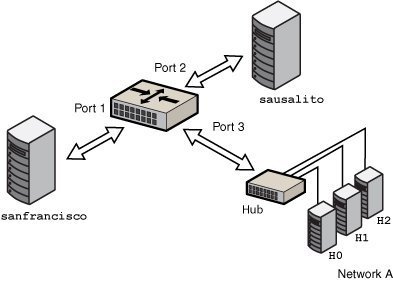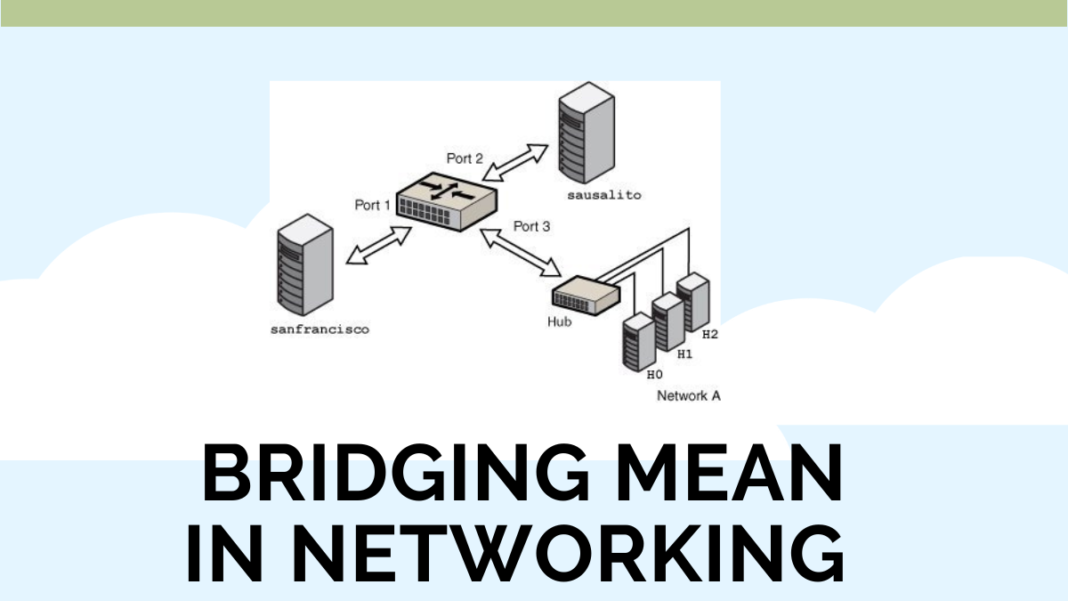Networking is the backbone of modern-day communication. The internet and computer networks have revolutionized how we communicate and share information.
But, various networking devices ensure that data gets transmitted correctly. It also ensures efficiency and security across a network. One such device is known as a bridge.
In this blog, we’ll explore everything you should know about bridge in computer network. We will also discuss the role combinational circuits play in bridge operation.
What is a Bridge in Computer Networking?
A bridge in a computer network is a networking device that connects two separate network segments. It forwards data packets between them.
Bridges extend the reach of a network beyond its physical limits. Also, they increase the available bandwidth by dividing a network into smaller segments.
Bridges also help to reduce network congestion. They filter unnecessary traffic and only forward packets that need to get transmitted.

How Does a Bridge Work?
A bridge works by reading the destination address of each packet entering it. It discards the packet if the destination address is on the same source address.
If the destination address is a different segment, the bridge forwards the packet to that segment.
To make forwarding decisions, bridges use a table. This table maps MAC addresses to specific network segments.
When a packet arrives at a bridge, it checks the table. Then it determines the appropriate segment to forward the packet to.
Suppose the destination address is not mentioned in the table. In that case, it sends the packet to all segments except the one it arrived on.
This process is known as flooding. When a packet gets flooded, the other bridges on the network will receive the packet.
Then they add the destination address to their own tables, thereby learning the location of the destination device.
What are the types of Bridges?
There are several types of bridges used for different purposes. Let’s learn about the types of bridges that help in computer networking.
- Simple Bridge
Simple bridges in computer networks are the most basic type of bridge. They use a static forwarding table that gets configured manually. Simple bridges do not learn or adapt to changes in the network. So, they are best suited for small networks with a limited number of devices.
- Learning Bridge
Learning bridges use a dynamic forwarding table. It gets built automatically as packets get forwarded through the network. Learning bridges use flooding to discover the location of devices on the network.
- Spanning Tree Protocol (STP) Bridge
STP bridge gets used in more extensive networks. These bridges help to prevent loops in the network topology by using a unique algorithm. It ensures only one active path between any two devices on the network and blocks the other paths.
- Source Route Bridges
A Source Route Bridge allows packets to get forwarded based on a predetermined path through the network. Source Route Bridges use a special header in the packet. It specifies the path the packet should take through the network.
- Transparent Bridges
A Transparent Bridge is called “transparent” because it is invisible to the network. This does not affect the network’s operation in any way. It forwards packets between network segments based on the destination MAC address. It doesn’t change the packets in any way.
Benefits of Using Bridge in a computer network
Bridges offer several benefits.
- First, they help extend a network’s reach beyond its physical limitations.
- Second, they increase available bandwidth by dividing a network into smaller segments.
- Third, they reduce network congestion by filtering unnecessary traffic.
- Moreover, they forward only the packets that need to get transmitted.
- Finally, bridges improve network reliability by providing redundancy and fault tolerance.
Common Problems with Bridging
- Network Loops
The most common issues are network loops. They occur when there are redundant connections between bridges or devices on the network.
Network loops can cause packets to get transmitted repeatedly between bridges. This creates a broadcast storm that can overwhelm the network, bringing it to a standstill.
- Network Congestion
Another common issue with bridges is the potential for network congestion. It occurs due to the increase in the number of devices on a network, which increases the amount of traffic.
This traffic can overwhelm Bridges, leading to delays and dropped packets.
Now, let’s discuss the role of combinational circuits in computer networks.
What are Combinational Circuits?
Combinational circuits are digital circuits. They have a set of input signals and a set of output signals.
The input determines the output of these circuits’ signals’ current values. It helps to perform rm logical operations on packets. They make forwarding decisions based on the results of those operations.
How do Combinational Circuits Works?
These circuits get built from simple logic gates, such as AND, OR, and NOT gates. The inputs to the circuit are connected to the gates.
These gates perform logical operations on the input signals. The circuit output is then sent to the bridge’s forwarding table. Here it helps to make forwarding decisions.
One example of a combinational circuit is a port priority encoder. It determines how packets should get forwarded to different ports on a bridge.
The encoder assigns each port a priority level based on its physical location on the network. The packets are then forwarded to the highest priority port that is not currently busy.
How Does Bridge Operation Work Using Combinational Circuits?
A bridge in a computer network uses combinational circuits to forward packets. It examines the destination address of each packet. Then, it determines the segment to which the packet should get forwarded with the help of that information.
The bridge’s forwarding table contains entries. These entries map MAC addresses to specific network segments. When a packet arrives at the bridge, it forwards the packet to the appropriate segment according to the destination MAC address.
Conclusion
Bridges play a very important role in computer networking. It connects different network segments and improves network efficiency and reliability. While combinational circuits help in making forwarding decisions by performing logical operations on packets.



